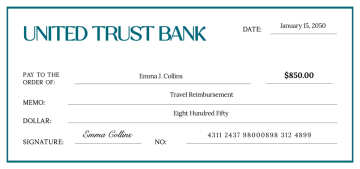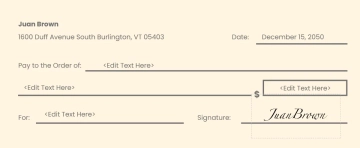Free Finance Audit Journal

Introduction
A. Purpose
The primary objective of conducting the Finance Audit within [Your Company Name] is to meticulously review and assess the financial transactions, records, and systems in place. The purpose is twofold: to ensure the accuracy and reliability of financial information and to guarantee compliance with established accounting standards and regulations. By undertaking this comprehensive audit, we aim to provide stakeholders, including management and external parties, with a transparent and trustworthy depiction of the financial health of [Your Company Name].
B. Scope
The scope of this Finance Audit encompasses the entirety of [Your Company Name]'s financial landscape. This includes, but is not limited to, the examination of income, expenses, investments, and overall financial statements. The audit extends to scrutinizing the methodologies and processes involved in financial reporting, ensuring that all financial activities align with industry best practices and legal requirements. Additionally, the scope covers the identification of any potential financial risks that may impact the stability and sustainability of [Your Company Name].
C. Frequency
This Finance Audit is conducted on a quarterly basis. This frequency has been strategically chosen to strike a balance between maintaining up-to-date insights into the company's financial status and allowing for a comprehensive and thorough review of financial records. Quarterly audits provide a proactive approach to addressing any emerging issues promptly and allow for timely adjustments to financial strategies and planning.
Financial Statements
A. Balance Sheet
Assets
Asset Type
Amount
Current Assets
[$3,200,000]
Liabilities
Liability Type
Amount
Current Liabilities
[$1,500,000]
Equity
Equity Component
Amount
Common Stock
[$2,000,000]
These balance sheet details present a comprehensive snapshot of [Your Company Name]'s financial position. The current assets, fixed assets, liabilities, and equity are meticulously outlined, providing clarity on the company's assets and obligations. This information is crucial for stakeholders, as it facilitates an understanding of the company's financial stability and its capacity to meet short-term and long-term obligations.
B. Income Statement
Revenue Source | Amount |
|---|---|
Sales | [$5,500,000] |
Expense Category | Amount |
|---|---|
Operating Expenses | [$3,200,000] |
The income statement offers a breakdown of [Your Company Name]'s revenue sources and expenses, resulting in the net income. This section provides valuable insights into the company's operational performance, showcasing areas of strength and identifying potential areas for improvement.
Audit Details
A. Audit Objectives
The audit for [Your Company Name] is designed to achieve the following objectives:
Verify the accuracy of financial statements, ensuring they faithfully represent the company's financial position.
Ensure compliance with established accounting standards and regulatory requirements.
Identify potential financial risks that may impact the organization.
B. Audit Procedures
To accomplish the audit objectives, the following procedures are implemented:
Random sampling of financial transactions to ensure representative accuracy.
Thorough review of financial documents, including invoices, receipts, and financial statements.
Interviews with key financial personnel to gain insights into financial processes and controls.
C. Findings and Recommendations
Findings:
Minor discrepancies in expense categorization were identified.
Adequate documentation was observed for income sources.
Recommendations:
Implement a refined expense categorization system for greater precision.
Continue maintaining thorough documentation practices for sustained transparency.
Risk Assessment
A. Risk Identification
Market Fluctuations:
Recognizing the vulnerability to market fluctuations affecting revenue streams.
Potential impact on sales and profitability due to changes in market conditions.
Regulatory Changes:
Anticipating potential alterations in regulatory requirements affecting financial operations.
The risk of non-compliance leading to penalties or operational disruptions.
B. Mitigation Strategies
Diversification of Revenue Streams:
Exploring new markets or customer segments to reduce dependence on specific revenue sources.
Implementing targeted marketing strategies to reach a wider audience.
Proactive Regulatory Monitoring:
Establishing a dedicated regulatory monitoring team to stay abreast of changes.
Conducting regular internal audits to ensure ongoing compliance with evolving regulations.
These mitigation strategies are designed to proactively address the identified risks, fortifying [Your Company Name] against potential challenges and uncertainties in the dynamic business environment.
Future Financial Planning
A. Forecasting
Based on the audit findings, forecasted goals for the next quarter include:
Sales Growth:
Implementing targeted marketing campaigns to achieve a [10%] increase in sales.
Exploring new markets or demographics to expand the customer base.
Cost Reduction:
Implementing cost-cutting measures to achieve a [5%] reduction in operating expenses.
Streamlining operational processes to improve efficiency and reduce overhead.
B. Investment Opportunities
Technology Upgrades:
Exploring technology upgrades to enhance operational efficiency and reduce long-term costs.
Investing in innovative solutions to stay competitive in the industry.
Strategic Partnerships:
Investigating potential partnerships with complementary businesses.
Collaborating on cost-sharing initiatives to optimize resource utilization.
Financial Controls Enhancement
A. Control Assessment
In this phase, a thorough examination of the existing financial controls within [Your Company Name] is conducted. This encompasses an evaluation of internal controls designed to mitigate risks, ensure accuracy in financial reporting, and maintain compliance with regulatory standards. The assessment involves a detailed review of processes related to financial transactions, access controls, and segregation of duties.
B. Improvement Strategies
Following the control assessment, the Finance team will implement targeted strategies to enhance the effectiveness of financial controls. This may involve:
Automation: Identifying opportunities to automate routine financial processes, reducing manual errors and increasing efficiency.
Training Programs: Conducting training sessions to educate staff on the importance of adhering to established controls and protocols.
Enhanced Monitoring: Implementing advanced monitoring tools and technologies to detect anomalies in real-time.
Periodic Reviews: Establishing a regular review schedule to ensure that controls remain effective and relevant in the evolving business landscape.
The ultimate goal is to fortify the control environment, fostering a culture of accountability and integrity while mitigating the risk of financial irregularities.
Key Performance Indicators (KPIs) Monitoring
A. Selection of KPIs
Careful consideration is given to selecting KPIs that directly align with [Your Company Name]'s financial objectives and broader strategic goals. Examples of relevant KPIs may include:
Profit Margins: Monitoring gross and net profit margins to assess the profitability of the business.
Cash Flow Ratios: Analyzing operating, investing, and financing cash flows to ensure liquidity.
Return on Investment (ROI): Evaluating the returns generated from investments and projects.
Debt-to-Equity Ratio: Assessing the company's financial leverage and risk.
B. Monitoring and Analysis
A systematic approach is established for the ongoing monitoring and analysis of selected KPIs:
Benchmarking: Setting benchmarks based on historical performance and industry standards.
Regular Tracking: Implementing a regular tracking mechanism to monitor KPIs at predefined intervals.
Root Cause Analysis: Conducting in-depth analyses to identify the root causes of variances or trends, enabling proactive decision-making.
Reporting: Developing comprehensive reports that provide stakeholders with a clear understanding of financial performance against established KPIs.
Conclusion
A. Summary
The Finance Audit for [Your Company Name] has provided a comprehensive overview of the company's financial health. Despite minor discrepancies in expense categorization, the overall accuracy and compliance with accounting standards have been reaffirmed. The audit serves as a valuable tool for stakeholders to understand the strengths and areas for improvement within [Your Company Name]'s financial management.
B. Acknowledgments
We extend our sincere appreciation to the dedicated members of [Your Company Name]'s finance team, whose collaboration and transparency significantly contributed to the success of this audit. Their commitment to maintaining accurate financial records and their responsiveness to audit inquiries have been instrumental in ensuring the effectiveness of the audit process.
- 100% Customizable, free editor
- Access 1 Million+ Templates, photo’s & graphics
- Download or share as a template
- Click and replace photos, graphics, text, backgrounds
- Resize, crop, AI write & more
- Access advanced editor
Efficiently record audit details with the Finance Audit Journal Template on Template.net. This editable and customizable journal simplifies documentation processes. Tailor content effortlessly using our Ai Editor Tool, ensuring adaptability and precision. Elevate your financial strategies with this user-friendly template, offering a comprehensive approach to crafting personalized audit journals for informed decision-making and strategic financial planning.





























